Omaha Postcard

Published July 31st, 2017 at 12:30 PM
By Kevin Collison
Port KC rolled out its sketchy concept for the Berkley Riverfront a few weeks ago, but if anyone wants to see a farsighted vision realized, they should drive three hours up I-29 to Omaha.
First off, Kansas City and Omaha share a very similar relationship with the Missouri River. Both towns started on its banks and then moved out, so their downtowns remain in close proximity to those beginnings.
Omaha however, began a disciplined quest to reconnect its downtown with its Missouri riverfront back in the early 1970s.
Government and civic leaders, with the help of federal block grants, acquired a one-block wide corridor of buildings running from the downtown center about four blocks east toward the river. Those properties were demolished and a landscaped waterway corridor was created, called Gene Leahy Mall.
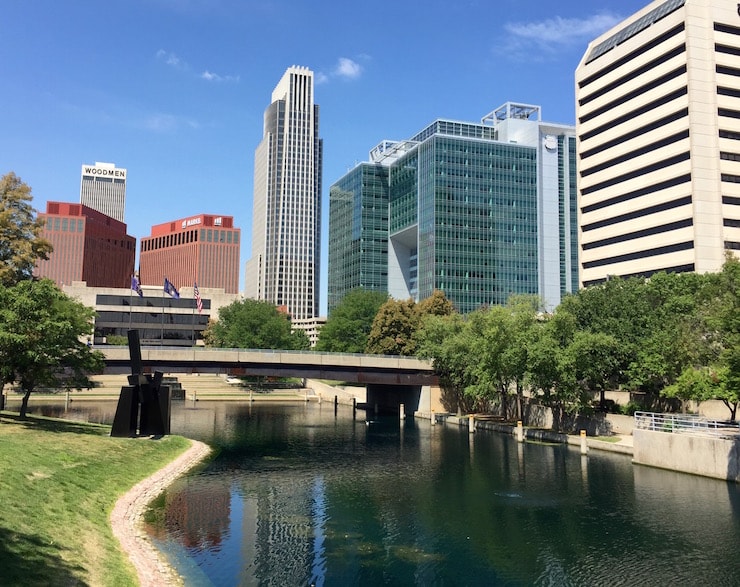
Omaha began connecting its downtown with the river with the Gene Leahy Mall, a waterway park, in the 1970s.
In the late 1980s, ConAgra relocated its headquarters as part of a major riverfront redevelopment plan.
Land contaminated by industry and blocked by railroad tracks was transformed to create the Heartland of America Park that connected with the Leahy Mall, completing the downtown connection to the Missouri.
Then during the 1990s and early 2000s, a development and recreational corridor was extended north of the park along the riverfront after a similar cleanup of that property.
It featured a new regional headquarters for the National Park Service, a headquarters campus for the Gallup polling firm, a pair of mid-rise condo buildings, public art, a plaza and the Bob Kerrey pedestrian bridge over the river to the Iowa side.
On a recent visit, all those parts were functioning in harmony along a stretch of the riverfront extending for more than a mile.
People were riding bicycles, kids were playing in a fountain pool, families were having lunch, the Park Service visitor center was hopping and the Kerrey bridge was busy with walkers and bike riders.
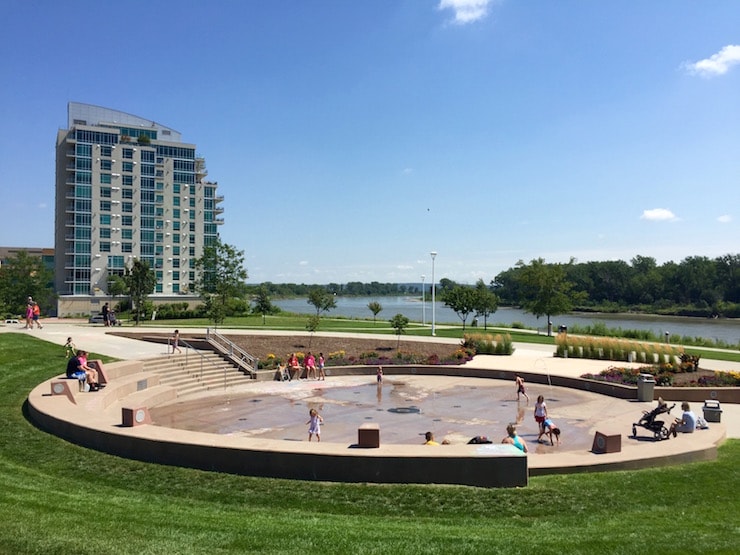
A fountain pool is one of the many amenities along the Omaha riverfront.
Omaha has thoughtfully planned a destination that’s become a huge draw both to locals and visitors. You can rent a bike and ride for miles on trails on both sides of the river. The Park Service features a lovely garden area of native plants. The Plaza features concerts and there are artificial coves for boaters to dock.
Unfortunately, Kansas City has not dedicated itself to a similar long-range plan.
While our downtown riverfront has been cleaned up after a concerted effort, it remains relatively sterile. Berkley Park is essentially a passive pasture with no real programming to bring people there except for a few big events.
An attempt to attract office developments there has failed, most recently when civic leaders resisted a plan to build a new federal building there. The 410-unit apartment project being built is a start, but its design resembles a suburban development.
One of the more promising ideas is extending the streetcar to the Berkley Riverfront. It would do a lot to bring people there, but the big question is ‘then what?’
Much more needs to be done to create a built environment that’s welcoming and offers multiple opportunities to enjoy the riverfront. The rock levy cutting the river off from the park may prevent floods, but its a barrier to enjoying the water too.
Port KC needs to become more inclusive in laying out its vision for the riverfront, and it would be encouraging if our civic leaders would begin pursuing our riverfront opportunities as seriously as their Omaha counterparts have done for almost 50 years now.

The regional offices of the U.S. Department of the Interior are among the riverfront developments.
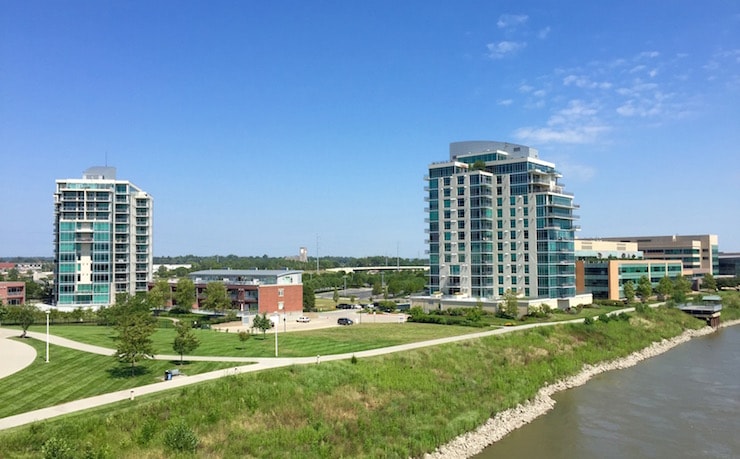
Mid-rise condo projects offer views of downtown and the river.
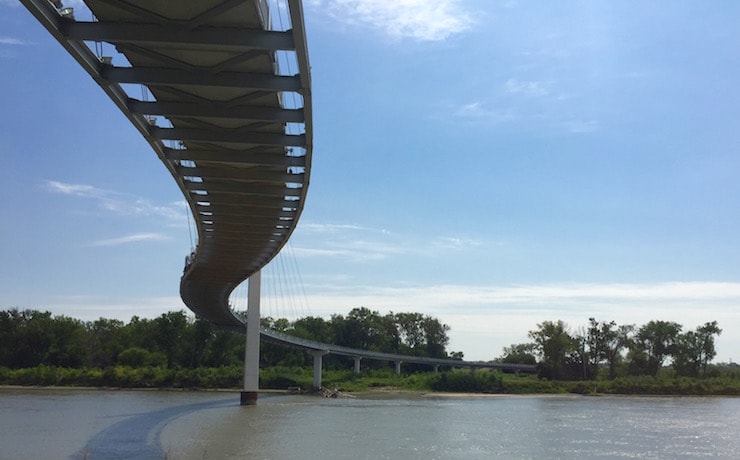
The Bob Kerrey Bridge offers a striking architectural amenity to the Omaha riverfront.
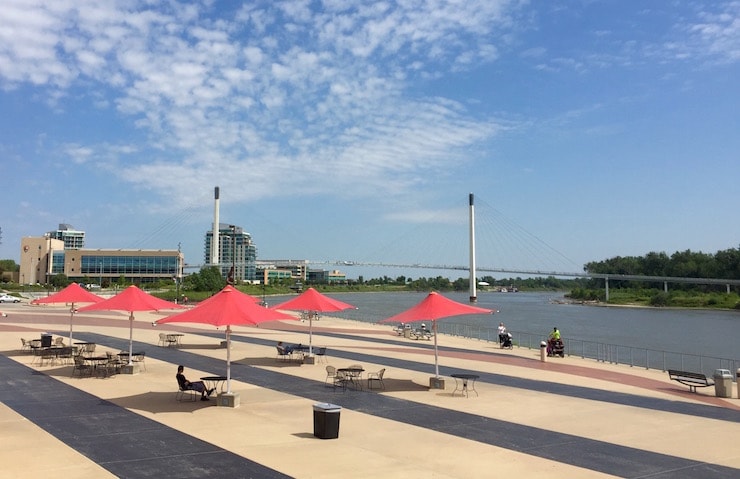
A plaza along the riverfront is a place for concerts and picnickers.


